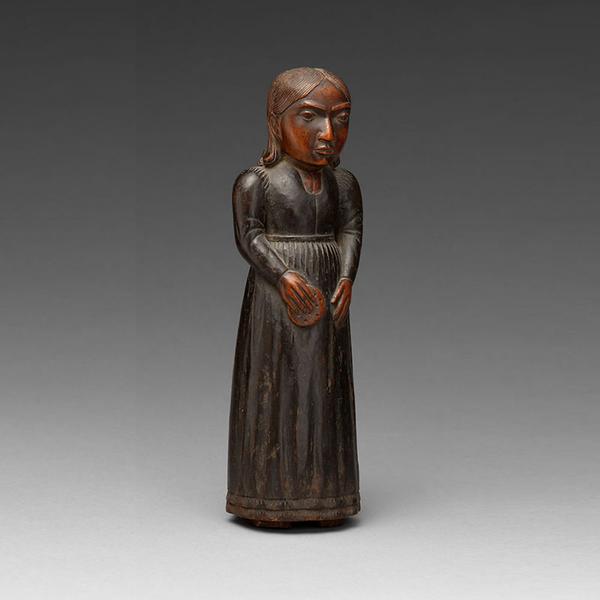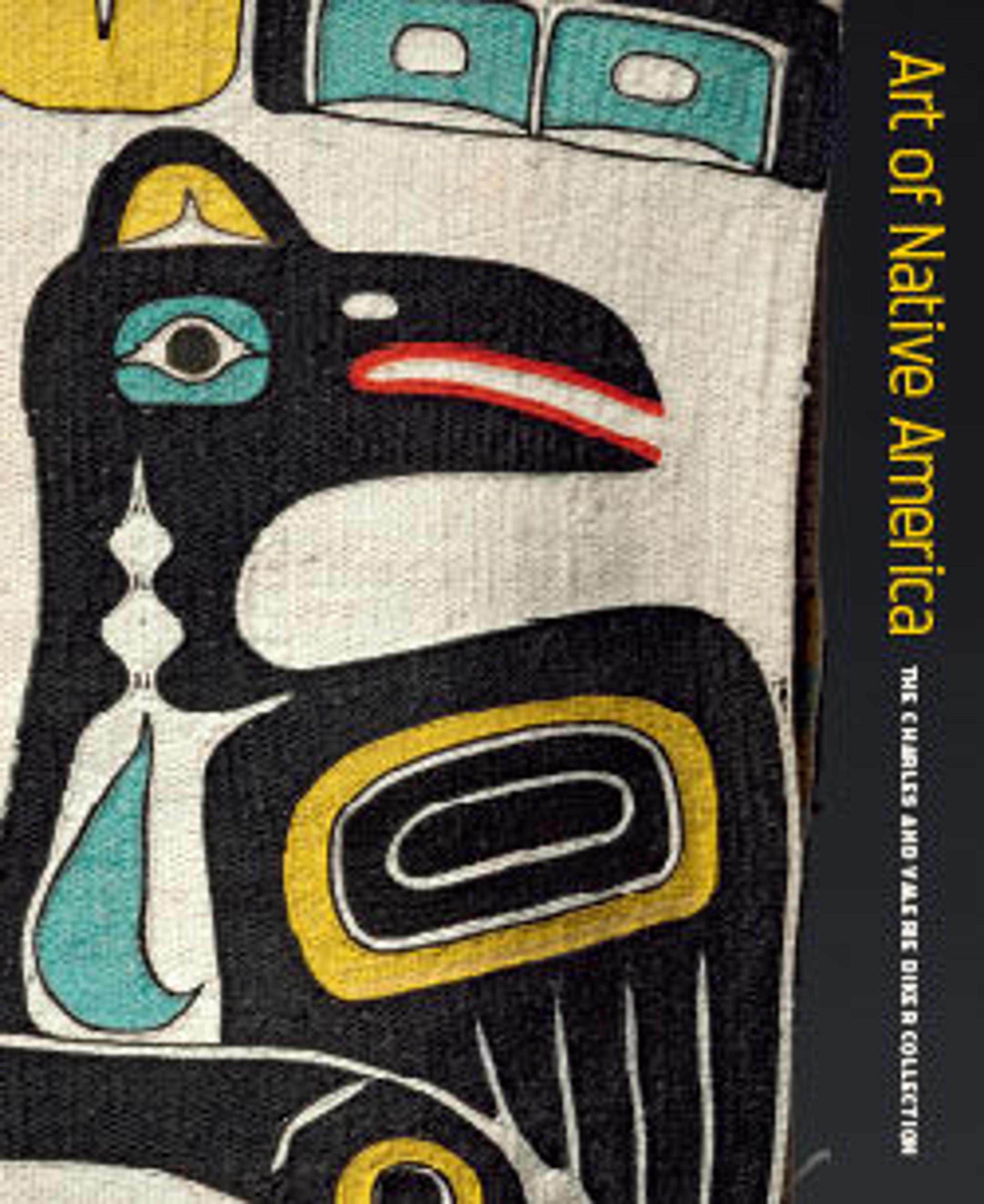Portrait figure
Artwork Details
- Title: Portrait figure
- Date: ca. 1840
- Geography: Made in British Columbia, Canada
- Culture: Haida, Native American
- Medium: Wood and pigment
- Dimensions: 12 1/2 × 3 1/4 in. (31.8 × 8.3 cm)
- Credit Line: The Charles and Valerie Diker Collection of Native American Art, Gift of Charles and Valerie Diker, 2019
- Object Number: 2019.456.5
- Curatorial Department: The American Wing
Audio

9809: Portrait Figure, Haida Artist
PATRICIA: Looking closely, you can see her face is incredibly detailed… Her eyes, the details of her nose bridge, her lips, all directly reference a particular person. And the ruffles of the dress, the patterns along the bottom, the shoulder pleats, and also the pleats at the waist are all incredible details that are carved into this portrait.
TANTOO: Met Associate Curator Patricia Marroquin Norby…
PATRICIA: It really shows that the carver was thinking about someone in particular, perhaps someone special that he knew or someone who was close to him.
TANTOO: This portrait of a young woman is a stunning piece of art – but it’s also a rare window into Haida culture in the mid-19th century, as non-indigenous clothing and practices had begun to infiltrate their communities.
PATRICIA: The young woman’s shorter hair, the details of her dress, and also the piece of bread that she’s holding, all represent intercultural negotiations and interactions between the Haida with non-Haida peoples.
TANTOO: The woman’s dress – so sensitively carved by the artist – is not a traditional Haida garment, but more likely one she would have purchased from a non-Indigenous source. Her hair is cut in a European style, and some scholars believe that the bread in her hands is a communion wafer, signifying her conversion to Christianity. Others suggest it’s a type of bread favored by European sailors. Either way, it shows that important intercultural exchanges were occurring in the 19th century along the Northwest Coast.
More Artwork
Research Resources
The Met provides unparalleled resources for research and welcomes an international community of students and scholars. The Met's Open Access API is where creators and researchers can connect to the The Met collection. Open Access data and public domain images are available for unrestricted commercial and noncommercial use without permission or fee.
To request images under copyright and other restrictions, please use this Image Request form.
Feedback
We continue to research and examine historical and cultural context for objects in The Met collection. If you have comments or questions about this object record, please contact us using the form below. The Museum looks forward to receiving your comments.
